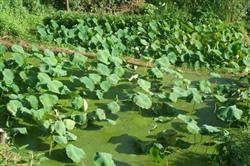How to fertilize kidney beans
Kidney bean is one of the vegetables that we often eat, and it is widely planted in our country. It is a crop that needs more fertilizer and needs different fertility during the whole growth period. Only when growing in an environment with sufficient fertility can high yield be achieved. So how to fertilize kidney beans? What kind of fertilizer should be applied? Let's take a look at the details brought by the editor.

1. Characteristics of fertilizer requirement
Kidney bean has a well-developed root system, which is suitable for growing in soil with loose and fertile, good drainage and good permeability, which is not tolerant to salt and alkali and continuous cropping. During the whole growth and development period, kidney bean has more demand for nitrogen and potassium fertilizer, but less demand for phosphate fertilizer and large demand for nitrogen fertilizer, but the ability of root nitrogen fixation is poor, so it is necessary to ensure the supply of nitrogen during planting to prevent poor growth due to nitrogen deficiency, but excessive application of nitrogen fertilizer will lead to a decrease in the number of flowering and pods. Potassium fertilizer is generally applied in the middle and later stage, while phosphate fertilizer is generally in the early growth stage. Potassium fertilizer can expand kidney bean pods, increase yield, prevent premature senescence, and apply a small amount of calcium, boron and molybdenum fertilizer in the later stage. Calcium fertilizer can improve disease resistance and prevent leaf shedding, while boron and molybdenum can promote growth and development.
2. Principles of fertilization
When planting, some farmers do not have enough awareness of fertilizer, and they can not master scientific fertilization technology when fertilizing. the following editor brings kidney bean fertilization principles: base fertilizer, topdressing as a supplement, organic fertilizer and inorganic fertilizer are used reasonably, and nitrogen, phosphorus and potassium are used reasonably to supplement trace elements needed by molybdenum, zinc, boron and other plants.
3. Apply sufficient base fertilizer
Kidney bean has a long growth period and needs to absorb enough nutrients, so it is necessary to ensure an adequate supply of nutrients, and the best way is to apply sufficient base fertilizer in the soil during planting, which can not only promote plant germination and branching as soon as possible. it can also continue to provide nutrition in the later stage to avoid falling flowers and improve flowering and fruiting. General application of organic fertilizer 3000-4000kg per mu, with 50--60kg compound fertilizer, it should be noted that the organic fertilizer must be completely mature, otherwise it will release a lot of heat during decomposition, harm the root system of kidney bean, cause root burning, serious cases can lead to plant death.
4. Reasonable topdressing
After applying sufficient base fertilizer, it is generally necessary to topdressing for 3-4 times, mainly in the seedling stage, rosette stage, flowering and podding stage. Kidney bean generally does not need topdressing in the seedling stage, the soil and base fertilizer are sufficient for its growth, but in the case of low soil nitrogen content, it is necessary to properly apply some nitrogen fertilizer to ensure its normal growth. In the rosette stage, in order to promote the plant to grow lateral roots and increase the number of flowering and pods, nitrogen and potassium compound fertilizer 10-15kg could be applied at this time. In the flowering and podding stage, after pod formation, 15-20 kg of high concentration compound fertilizer was applied to promote plant growth, accelerate pod growth and increase yield. In addition, the seedlings are extremely prone to symptoms of element deficiency at the seedling stage, resulting in abnormal leaf color and growth, so 1.9% zinc sulfate dissolved oxygen can be sprayed 2-3 times, low concentration ammonium molybdate solution can be sprayed during flowering and podding stage, and low concentration urea and potassium dihydrogen phosphate solution can be sprayed at flowering stage.
The above is the whole content of kidney bean fertilization, hope to help you, want to know more kidney bean planting knowledge, please pay attention to us.
- Prev

Key points of management in ginger expansion period
Key points of management in ginger expansion period
- Next

Planting techniques of lotus root
Lotus root is a perennial aquatic plant of the family Nymphaeaceae, also known as pond lotus and hibiscus, which likes a warm and humid climate and requires sufficient sunshine, fertile and deep soil and an environment with adjustable water level. Its fruit is called lotus, its rhizome is called lotus root, and its flower is called lotus. The main edible part is rhizome. Lotus root is rich in nutrition, can be cooked, fried, and.
Related
- Where is it suitable to grow horseradish in China? it is expected to see the middle altitude horseradish in Alishan.
- How to prevent tomato virus disease reasonably? (Control methods included)
- Many people like to plant towel gourd on the balcony. What are the main points of this method and management?
- What crops can chili peppers be mixed with?
- Fertilization techniques and matters needing attention in Tomato
- What are the grafting techniques for peach seedlings in spring?
- Harm and control methods of root swelling disease of Chinese cabbage
- What are the pests of sweet potatoes? How to prevent and cure it?
- Symptoms, causes and Control methods of navel Rot in Tomato
- The cause of "Cucumber rotten bibcock" in Farmers' planting Cucumber and its Control Plan

